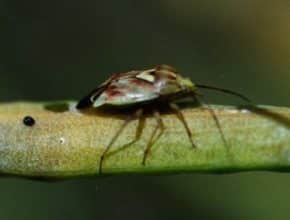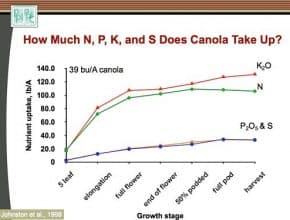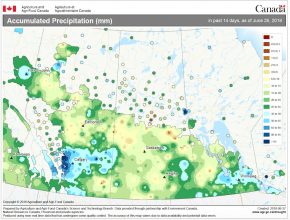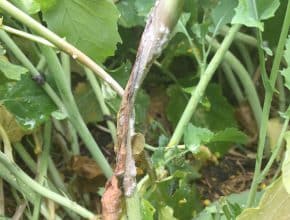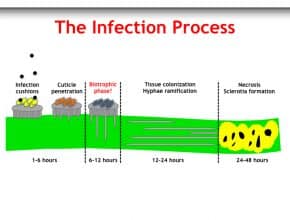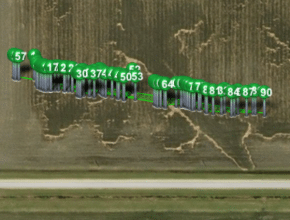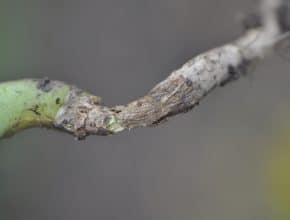In very dry conditions: Threshold tables for lygus indicate that if canola is $12 per bushel and spray costs $8 per acre, the threshold at the early pod stage is 5 lygus adults or late instar nymphs per 10 sweeps (0.5 per sweep). In moist and high-yield conditions: The economic threshold is quite a bit higher. At early pod stage,…
Canola Watch Posts
-
-
The ideal time for a sulphur top up is any time before flowering, but a top up at early flowering may pay off if plants are showing signs of sulphur deficiency. The ideal time for a nitrogen top up is before the 5-leaf stage of canola, but AAFC research out of Indian Head, Saskatchewan, shows that nitrogen top dress as…
-
Five questions that could help with your sclerotinia spray decisions…
-
Soil moisture and rainfall leading up to flowering is an indicator of sclerotinia stem rot risk. Rain in this pre-flower period will have apothecia emerging and spore release occurring around the time of early flowering. This map from AAFC's Agroclimate website shows precipitation accumulation across the Prairies from June 12-26…
-
-
The timeline from when sclerotia in the soil first take on moisture, to apothecia germination, spore release, petal infestation, petal drop and finally canola plant infection takes up to three weeks. This graphic shows the final 24 hours as the fungus on decaying petals enters the plant and creates a lesion…
-
-
Too windy. Too wet. Sometimes both. This pushed back a lot of weed management and some fields are still not sprayed. In this situation, intense weed pressure can reduce yields by 20%, 30%, 50%... That's why early weed control has a huge positive effect on profitability, but late control is better than nothing. Late control can stop the yield loss,…
-

